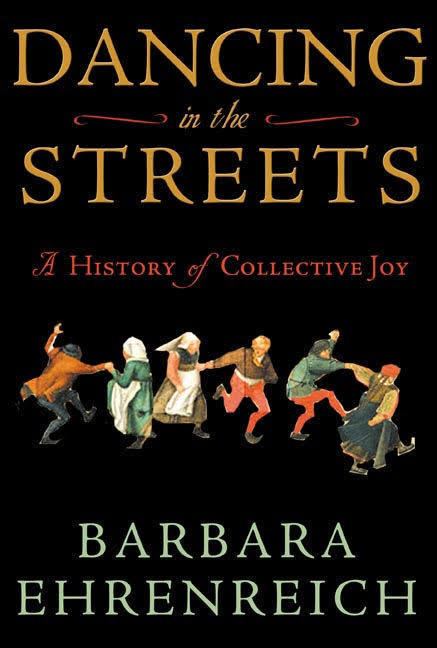7.6 /10 1 Votes7.6
Language English Publication date January 1, 2006 Pages 336 Originally published 1 January 2006 Page count 336 | 3.8/5 Goodreads Publisher Metropolitan Books Media type Hardcover ISBN 978-0-8050-5723-2 Genre Non-fiction Country United States of America | |||||||||||||||||||||||||||||||||
 | ||||||||||||||||||||||||||||||||||
Similar Barbara Ehrenreich books, Non-fiction books | ||||||||||||||||||||||||||||||||||
Dancing in the Streets: A History of Collective Joy is a book authored by Barbara Ehrenreich.
Contents
The author coins the term "collective joy" to describe group events which involve music, synchronized movement, costumes, and a feeling of loss of self. There is no precise word in English to describe the phenomenon.
The book describes cycles of creation and suppression of collective joy events. The events generally arise spontaneously and are regarded as dangerous (see Collective hysteria, Riot). The powerful elements of society gradually convert the participants into spectators. This conversion drains the events of their power, and the cycle begins anew. The author describes Western Society as particularly lacking in such events and describes current and recent examples of Collective Joy events.
Historical
Current
Collective Joy in transition
Other Collective Joy festivals
Collective Joy festivals can be found in many localities, though seldom known as such.
